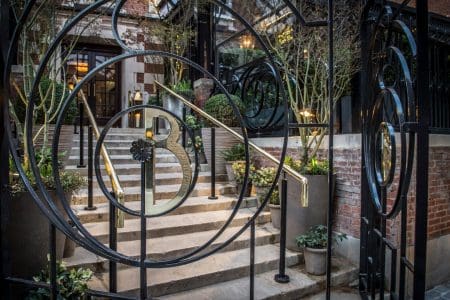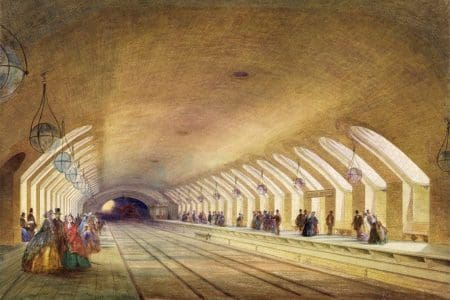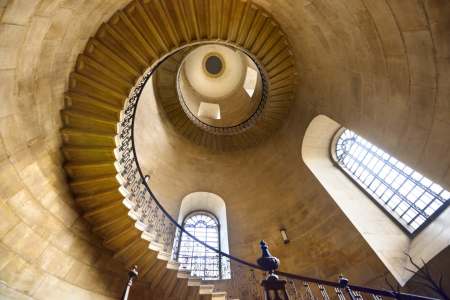Robert Spellman wades into an exhibition at London Museum Docklands to discover the Secrets Of The Thames unearthed by the river’s mudlarks
If mudlarking – the act of scouring riverine sludge for objects of value – was once the business of London’s poor hunting for lumps of coal, or bits of old rope and metal to sell to survive, these days it’s a desirable hobby, carried out on the capital’s longest archeological site, the banks of the Thames.
Human activity on the river dates to around 10,000 years, and today licenced mudlarks roam the foreshore, poised for whatever luck throws their way at low tide.
The latest exhibition at London Museum Docklands – Secrets Of The Thames: Mudlarking London’s Lost Treasures, the first of its kind in the capital, roots mudlarking in its early 18th-century origins, but quickly opens out into showcase of spectacular finds, enticingly lit inside glass boxes and display tables.
Previously unseen recent finds include a Tudor headdress, an elegant medieval gold ring featuring the inscription “pour amor say donne” (for love I am given) and a Viking dagger personalised with the owner’s name known as a “scramasax” from the 10th century.
One of the more alarming items is a set of dentures dating from the early 1700s. The teeth are real and understood to have been taken from one or more corpses. They are constructed using gold and ivory and would’ve been bespoke made for a person of affluence.
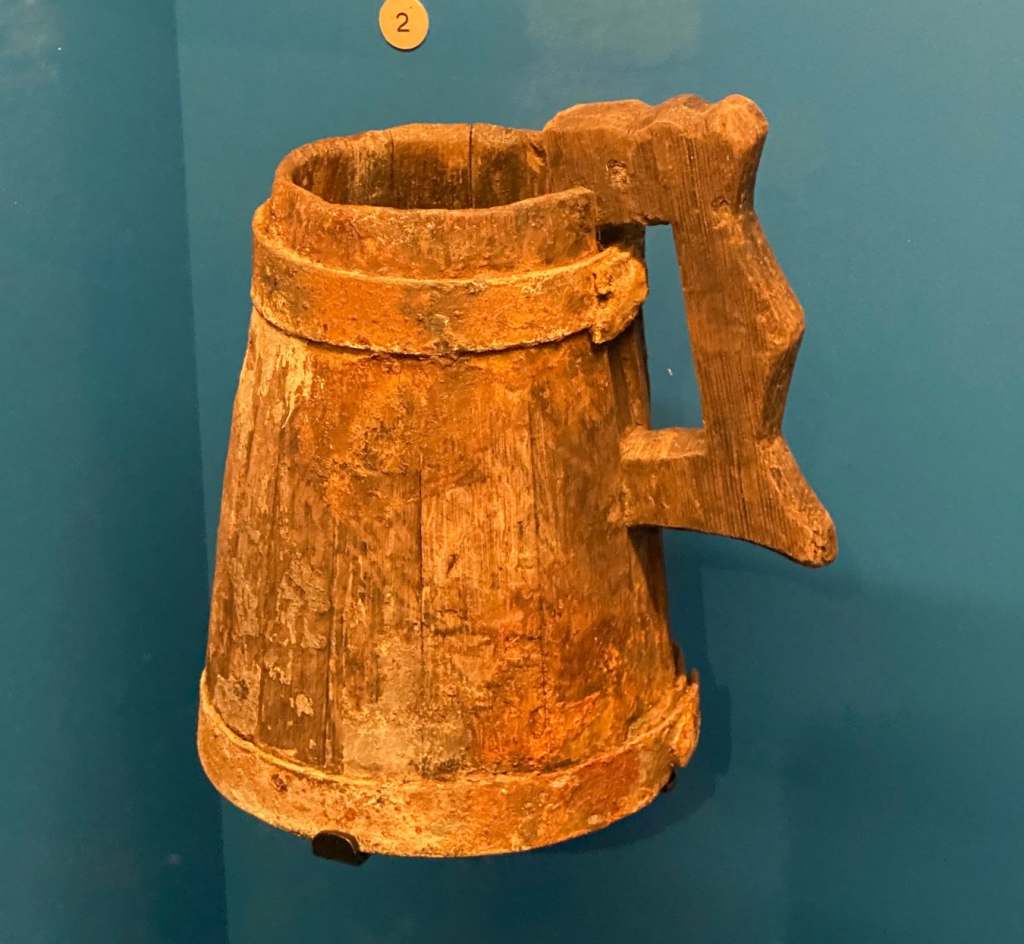
Established wonders on loan from the British Museum have also been included, such as the Battersea Shield, an item of war found in 1857 by a labourer. The shield is well over 2,000 years old and is made of bronze with delicate filigree swirls, coloured enamel and is amazingly well preserved.
Its neighbour is the Waterloo Helmet, found 11 years later by workers dredging the river at Waterloo Bridge. Also from the Iron Age, the bronze helmet is the only one with horns ever to be discovered in Europe, and like the shield has benefited from the time-stopping properties of London clay. In its day this thing would’ve “shone like the sun”.
There are nautical finds from the Tudor period like the three-pint wooden tankard, and also a “bosun’s whistle”; a small, pretty whistle used for communicating orders on a ship. While the oldest objects on display are the numerous Bronze Age arrowheads.
We also learn of “Billy and Charley’s” objects; 19th-century fakes of medieval royal figurines and coins whose illiterate inscriptions and misuse of roman numerals and ordinary numbers soon had the pair rumbled. A “Billy and Charley’s” became synonymous with a forgery.
The exhibition also features displays by several contemporary artists and designers whose mudlarking exploits carry into their work, which is often for sale. A giant moon, suspended from the ceiling, dominates one room. The atmospheric installation, by Luke Jerram, encourages us to meditate on the tidal habits of the Thames and illustrator Charlie Dixon has produced a notebook based on a 16th-century prayer book, the only known example of its kind which he found in the river.
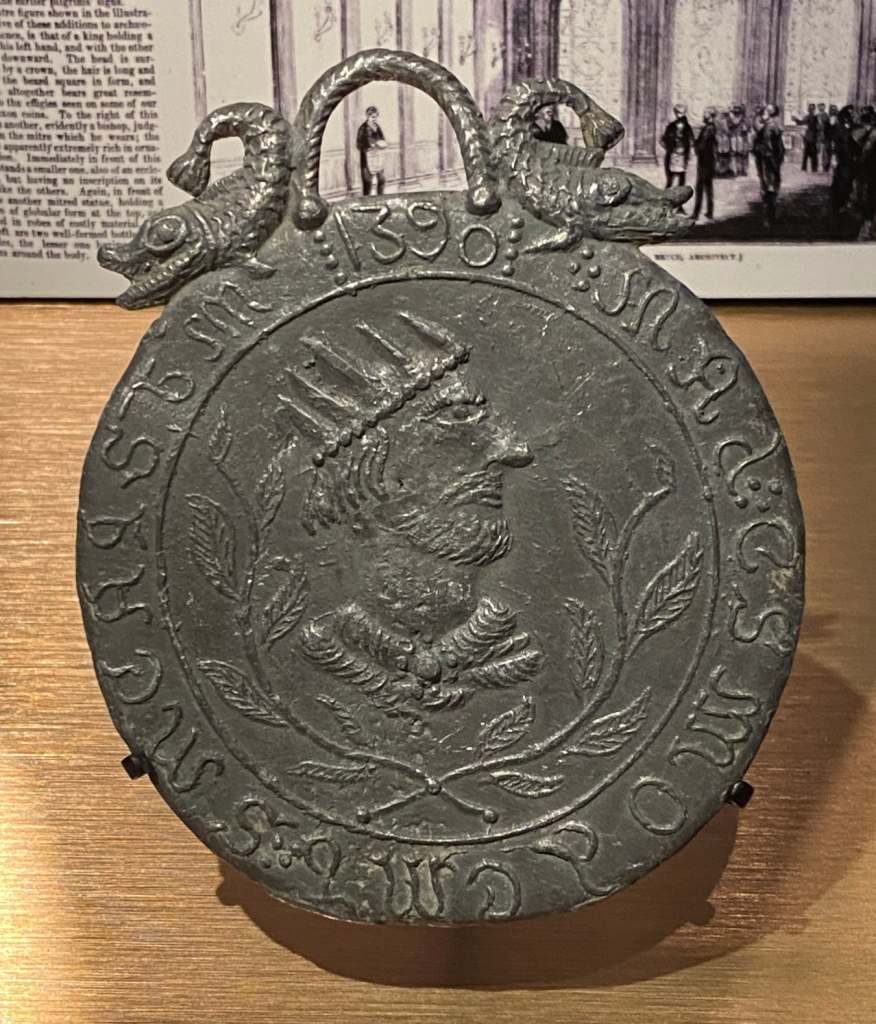
Ceramic artist Raewyn Harrison is inspired by London’s Delftware potteries industries that were situated along the Thames in the 17th and 18th centuries. Her porcelain bottles, vessels and boxes are printed with fragments of maps or sites along the river that fascinate her.
And ceramicist Mark Sowden makes replica Roman terracotta oil lamps. He says: “My experience as a sculpture technician allowed me to interpret signs of the manufacturing process of the original lamps. I have copied these processes faithfully. It gives me a really sense of connection with craftspeople who lived nearly 2,000 years ago.”
Exhibition curator, Kate Sumnall says: “Above all, the show is an exploration of love and desire, faith and loss, migration, community and culture. The stories of generations of people who have visited the city or called it home.”
All mudlarks must have a valid permit from the Port of London Authority, who own the Thames bed. To apply for a permit, visit: https://pla.co.uk/thames-foreshore-permits
Secrets Of The Thames: Mudlarking London’s Lost Treasures
London Museum Docklands
From 4 April 2025 to 1 March 2026
Main image : Roman Statuette © London Museum
